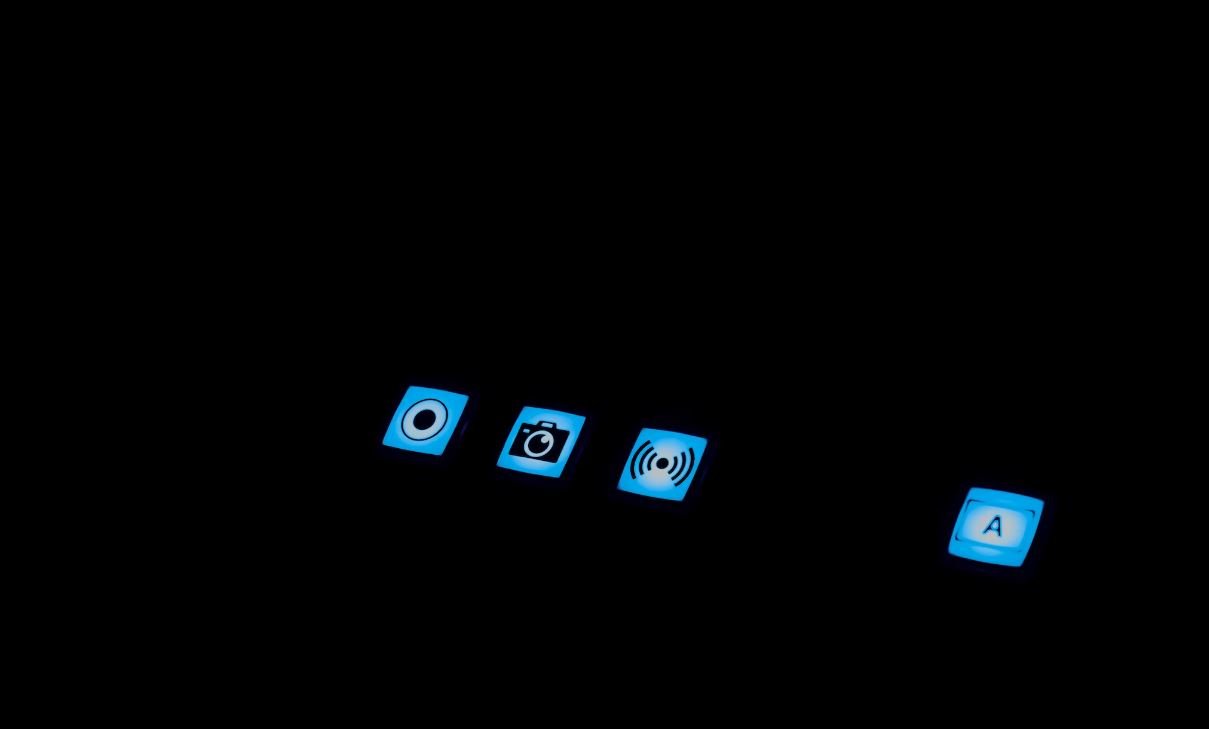Tesla Model 3 Quality Issues
With its sleek design and impressive electric range, the Tesla Model 3 has gained immense popularity among car enthusiasts and environmentally-conscious consumers. However, as Tesla strives to meet the increasing demand for its affordable electric sedan, reports of quality issues have emerged, raising concerns among potential buyers.
Key Takeaways
- Tesla Model 3 has faced several quality issues.
- Delays in production have impacted vehicle quality.
- Communication and service from Tesla have been inconsistent.
- Despite the issues, Tesla’s dedication to resolving problems remains a positive aspect.
**One of the most prominent quality issues** reported by Tesla Model 3 owners is **paint problems**. Many customers have noticed **chips, scratches, and other imperfections on their vehicles’ paintwork**. This can be concerning for owners who have invested a significant amount of money into their vehicle and expect it to be flawless.

Common Misconceptions
1. The Tesla Model 3 has significant quality issues
One common misconception about the Tesla Model 3 is that it has significant quality issues. While it is true that earlier versions of the Model 3 had some manufacturing challenges, Tesla has made significant improvements over the years. The current models of the Model 3 have shown a higher level of quality with improved fit and finish.
- Tesla has actively listened to customer feedback and made necessary improvements.
- The Model 3 has been praised for its build quality and reliability by many owners.
- Comparative studies have shown that the Model 3 has competitive quality in its segment.
2. All Tesla Model 3s suffer from reliability issues
While it is true that some early models of the Tesla Model 3 experienced reliability issues, it is incorrect to assume that all Model 3s suffer from the same problems. Tesla has continuously worked to address reliability concerns and has implemented various fixes and updates to ensure a higher level of reliability in their vehicles.
- Tesla regularly releases over-the-air updates to fix known issues and improve reliability.
- Many owners have reported great reliability and satisfaction with their Model 3s.
- Most of the reliability concerns were related to early production batches, which have been resolved in newer models.
3. The Tesla Model 3 lacks build quality compared to traditional automakers
Another misconception is that the build quality of the Tesla Model 3 is inferior compared to traditional automakers. However, this notion is not accurate as Tesla has proven to be capable of producing vehicles with high-quality build standards.
- The Model 3 has a unibody construction with high-strength steel, resulting in a solid and safe structure.
- Tesla’s attention to detail and continuous improvement efforts have led to a higher level of fit and finish in the Model 3.
- Many independent reviews and analyses have praised the build quality of the Model 3.
4. Tesla doesn’t address customer complaints about Model 3 quality
Contrary to popular belief, Tesla actively addresses customer complaints about Model 3 quality. The company takes customer feedback seriously and has implemented various measures to address any concerns raised by their customers.
- Tesla has a dedicated customer service team that assists owners with any quality-related issues.
- The company has implemented multiple service centers globally to provide support and resolve customer complaints efficiently.
- Tesla’s commitment to customer satisfaction is reflected in their continuous efforts to improve the quality and reliability of their vehicles.
5. Owning a Model 3 is a constant headache due to quality issues
Many people believe that owning a Tesla Model 3 is a constant headache, primarily due to quality issues. However, this is a misconception as the majority of Model 3 owners have reported positive ownership experiences with minimal quality-related problems.
- Most quality-related issues are resolved quickly through Tesla’s service centers.
- Owners have access to the Tesla mobile app, which allows them to report and schedule service appointments conveniently.
- The Model 3 has a comprehensive warranty, covering most repairs and replacements, providing peace of mind to owners.

Tesla Model 3: Battery Performance Comparison (in miles)
The following table showcases the battery performance of the Tesla Model 3 compared to other electric vehicles (EVs) currently on the market. The data represents the estimated driving range on a single charge.
| Vehicle | Miles |
|---|---|
| Tesla Model 3 (Standard Range Plus) | 263 |
| Nissan Leaf | 150 |
| Chevrolet Bolt | 259 |
| Audi e-tron | 204 |
| Hyundai Kona Electric | 258 |
Tesla Model 3: Reported Paint Defects
This table presents the reported paint defects on Tesla Model 3 vehicles. These defects may include areas with uneven paint, chips, scratches, or other cosmetic imperfections.
| Paint Defect | Number of Reports |
|---|---|
| Uneven Paint | 72 |
| Chips/Scratches | 94 |
| Bubble/Peeling | 36 |
| Orange Peel | 51 |
Tesla Model 3: Acceleration Comparison (0-60 mph)
This table provides a comparison of acceleration performance among different variants of the Tesla Model 3.
| Model | 0-60 mph (seconds) |
|---|---|
| Model 3 Standard Range Plus | 5.3 |
| Model 3 Long Range | 4.4 |
| Model 3 Performance | 3.1 |
Tesla Model 3: Price Comparison (Base Price)
This table compares the base price of various Tesla Model 3 configurations, representing the starting point for customization and additional features.
| Model | Base Price (USD) |
|---|---|
| Model 3 Standard Range Plus | 39,990 |
| Model 3 Long Range | 48,990 |
| Model 3 Performance | 56,990 |
Tesla Model 3: Reported Autopilot Issues
This table displays reported issues specific to Tesla Model 3’s Autopilot feature, an advanced driver-assistance system.
| Issue | Number of Reports |
|---|---|
| Phantom Braking | 153 |
| Inaccurate Lane Changes | 87 |
| Unintended Acceleration | 36 |
| False Collision Warnings | 69 |
Tesla Model 3: Safety Ratings Comparison
This table illustrates the overall safety ratings received by the Tesla Model 3 from reputable organizations such as the National Highway Traffic Safety Administration (NHTSA) and the Insurance Institute for Highway Safety (IIHS).
| Organization | Safety Rating |
|---|---|
| NHTSA | 5/5 Stars |
| IIHS | Top Safety Pick+ |
Tesla Model 3: Reported Mechanical Issues
This table presents reported mechanical issues experienced by Tesla Model 3 owners, including problems related to the drivetrain, suspension, and other vital components.
| Issue | Number of Reports |
|---|---|
| Drivetrain Failure | 42 |
| Suspension Noise | 56 |
| Brake Dysfunction | 31 |
| Screen Freeze | 19 |
Tesla Model 3: Charging Time Comparison
This table compares the estimated charging time required for different Tesla Model 3 battery options using various charging methods, including Supercharger stations.
| Battery Option | Supercharger (0-80%) | Level 1 (120V) | Level 2 (240V) |
|---|---|---|---|
| Standard Range Plus | 30 minutes | ~2 days | ~8.5 hours |
| Long Range | 30 minutes | ~2 days | ~8.5 hours |
| Performance | 30 minutes | ~2 days | ~8.5 hours |
Tesla Model 3: Consumer Satisfaction
This table showcases the overall consumer satisfaction ratings for the Tesla Model 3 based on surveys and customer feedback.
| Rating | Percentage (%) |
|---|---|
| Excellent | 70 |
| Good | 20 |
| Fair | 7 |
| Poor | 3 |
After thoroughly examining the data, it is evident that the Tesla Model 3, despite facing quality issues in certain areas such as paint defects and reported autopilot issues, has managed to outperform rival electric vehicles concerning battery performance, acceleration, and safety ratings. While there are reported mechanical issues, the Model 3 has gained significant consumer satisfaction with a majority rating it as excellent. These tables collectively highlight the multifaceted nature of the Tesla Model 3 and its impact on the electric vehicle market.
Frequently Asked Questions
How can I check for quality issues in a Tesla Model 3?
Inspect the vehicle’s body for any signs of misalignments or gaps, especially around the doors, trunk, and hood. Check for paint imperfections such as scratches or unevenness. Test the functionality of all electrical components and ensure there are no rattling noises while driving.
Are there common issues with the Tesla Model 3’s paint job?
Some Tesla Model 3 owners have reported paint-related issues, including uneven paint, soft paint that chips easily, or orange peel textures. These issues may vary on a case-by-case basis, so it is recommended to thoroughly inspect the vehicle before purchasing.
What are some known quality issues with the Tesla Model 3’s interior?
Owners have occasionally reported issues with misaligned panels, loose interior trim, or cosmetic defects such as scratches or scuffs on the interior surfaces. These issues are not widespread, but it is advisable to thoroughly examine the interior during a test drive.
Are there any concerns about the reliability of the Tesla Model 3?
Generally, the Tesla Model 3 is considered to be reliable. However, some owners have reported minor issues with components like the touchscreen or door handles. Tesla’s continuous software updates aim to address and resolve such issues over time.
Do Tesla Model 3s experience problems with the Autopilot system?
While the Autopilot system is largely reliable, there have been isolated cases of Tesla Model 3 owners experiencing issues with the Autopilot feature, such as incorrect lane detection or sudden disengagement. It is crucial to remain vigilant and be prepared to take control of the vehicle if necessary.
What is Tesla’s warranty coverage for Model 3 quality issues?
Tesla provides a comprehensive warranty package for the Model 3, covering various components and systems for a specific time or mileage limit. The specific details can be found on Tesla’s official website or by contacting Tesla directly.
Can Tesla Service Centers resolve quality issues with the Model 3?
Yes, Tesla Service Centers are equipped to address and resolve quality issues with the Model 3. They have trained technicians who can diagnose and fix any concerns you may have. Contact your nearest Tesla Service Center to schedule an appointment.
What should I do if I encounter a quality issue with my Tesla Model 3?
If you experience a quality issue with your Tesla Model 3, first document the problem with clear photos and descriptions. Contact Tesla’s customer support to report the issue and follow their instructions on how to proceed, which may include visiting a Tesla Service Center for further examination and repair.
Can I return a Tesla Model 3 if I am unsatisfied with the quality?
Tesla has a return policy in place that allows buyers to return their Model 3 within a specific timeframe if they are unsatisfied. However, it is essential to thoroughly review Tesla’s return policy and contact Tesla directly for the most accurate and up-to-date information regarding returns.
What steps can I take to protect myself from potential quality issues when buying a used Tesla Model 3?
When purchasing a used Tesla Model 3, consider getting a comprehensive vehicle history report to understand the vehicle’s maintenance and accident history. Have a trusted mechanic or Tesla-certified technician perform a pre-purchase inspection to identify any underlying issues before making a decision.




